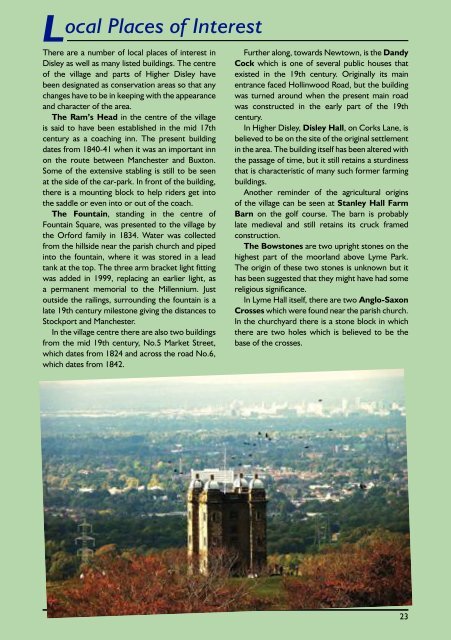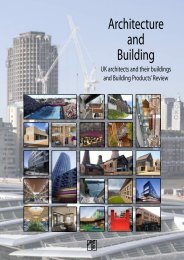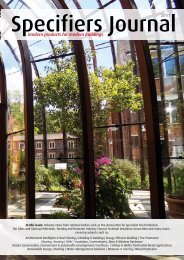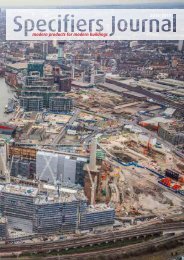Create successful ePaper yourself
Turn your PDF publications into a flip-book with our unique Google optimized e-Paper software.
LThere are a number of local places of interest in<br />
<strong>Disley</strong> as well as many listed buildings. The centre<br />
of the village and parts of Higher <strong>Disley</strong> have<br />
been designated as conservation areas so that any<br />
changes have to be in keeping with the appearance<br />
and character of the area.<br />
The Ram’s Head in the centre of the village<br />
is said to have been established in the mid 17th<br />
century as a coaching inn. The present building<br />
dates from 1840-41 when it was an important inn<br />
on the route between Manchester and Buxton.<br />
Some of the extensive stabling is still to be seen<br />
at the side of the car-park. In front of the building,<br />
there is a mounting block to help riders get into<br />
the saddle or even into or out of the coach.<br />
The Fountain, standing in the centre of<br />
Fountain Square, was presented to the village by<br />
the Orford family in 1834. Water was collected<br />
from the hillside near the parish church and piped<br />
into the fountain, where it was stored in a lead<br />
tank at the top. The three arm bracket light fitting<br />
was added in 1999, replacing an earlier light, as<br />
a permanent memorial to the Millennium. Just<br />
outside the railings, surrounding the fountain is a<br />
late 19th century milestone giving the distances to<br />
Stockport and Manchester.<br />
In the village centre there are also two buildings<br />
from the mid 19th century, No.5 Market Street,<br />
which dates from 1824 and across the road No.6,<br />
which dates from 1842.<br />
ocal Places of Interest<br />
Further along, towards Newtown, is the Dandy<br />
Cock which is one of several public houses that<br />
existed in the 19th century. Originally its main<br />
entrance faced Hollinwood Road, but the building<br />
was turned around when the present main road<br />
was constructed in the early part of the 19th<br />
century.<br />
In Higher <strong>Disley</strong>, <strong>Disley</strong> Hall, on Corks Lane, is<br />
believed to be on the site of the original settlement<br />
in the area. The building itself has been altered with<br />
the passage of time, but it still retains a sturdiness<br />
that is characteristic of many such former farming<br />
buildings.<br />
Another reminder of the agricultural origins<br />
of the village can be seen at Stanley Hall Farm<br />
Barn on the golf course. The barn is probably<br />
late medieval and still retains its cruck framed<br />
construction.<br />
The Bowstones are two upright stones on the<br />
highest part of the moorland above Lyme Park.<br />
The origin of these two stones is unknown but it<br />
has been suggested that they might have had some<br />
religious significance.<br />
In Lyme Hall itself, there are two Anglo-Saxon<br />
Crosses which were found near the parish church.<br />
In the churchyard there is a stone block in which<br />
there are two holes which is believed to be the<br />
base of the crosses.<br />
23







